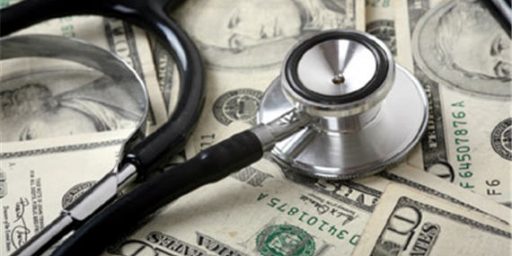Does the FDA Cause More Harm than Good?
Sometimes one can find libertarians making the argument that the FDA (may) cause more harm than good. The argument runs as follows: The FDA has a mandate to make sure that drugs coming to market are safe. They don’t have a mandate to make sure that people get new and possibly helpful drugs quickly. As such, new drugs may take longer coming to market than without the FDA and as a result people suffer and/or die. If more people suffer and/or die while waiting for drugs than are saved by making sure the drugs coming to market are safe, then the FDA is actually doing more harm than good.
As far as I know there has been little or no research into the above claims, until now.
In virtually all developed countries, regulatory authorities provide public oversight of the safety and efficacy of prescription drugs prior to their being approved for marketing. In the United States, the Food and Drug Administration (FDA) conducts such oversight. A central tradeoff facing the FDA involves balancing two goals: fulfilling its mission set by Congress to assure the safety and efficacy of drugs, while at the same time advancing the public health by not slowing down or disabling the innovative process by which new medical products reach the market.
Critics argue that the FDA is not taking enough time in evaluating new drugs, thereby allowing unsafe drugs to be marketed; others have argued that the agency is taking too long, therefore inflicting harmful effects on innovative returns and patient welfare. Surprisingly, little quantitative evidence has been put forward to evaluate the degree to which the speed and safety tradeoff facing the FDA is being resolved efficiently. More generally, there seems to be no suggested quantitative methodology or framework for assessing the economic efficiency of the agency’s specific tradeoff. Despite the FDA’s strict adherence to evidence-based evaluation of products overseen, there is far less evidence of its own safety and efficacy. Put differently, no product application would pass the FDA approval process with the quality and type of evidence that currently exists for evaluating the FDA policies themselves. The welfare consequences of this lack of methodology and systematic evidence may be quite substantial, as the FDA is estimated to regulate markets accounting for about 20 percent of consumer spending in the United States.
In short, there was never any kind of FDA-like analysis for what the FDA does. Pretty shocking when you think about what the FDA regulates. Note, that the results of such an analysis does not have to be simply keep-the-FDA-as-is, or have-no-FDA. The results could provide some ideas how to improve both the efficacy and the safety FDA procedures when it comes to prescription drugs.
In Assessing the Safety and Efficacy of the FDA: The Case of the Prescription Drug User Fee Acts (NBER Working Paper No. 11724), authors Tomas Philipson, Ernst Berndt, Adrian Gottschalk, and Matthew Strobeck estimate the welfare effects of a major piece of legislation affecting this tradeoff, the Prescription Drug User Fee Acts (PDUFA). These acts allowed the agency to charge user-fees to companies while at the same time imposing performance goals on the agency in terms of faster delivery of approval decisions.
The authors find that PDUFA raised the private surplus of producers, and thus innovative returns, by about $11 to $13 billion. The authors find that PDUFA raised consumer welfare by between $5 and $19 billion; thus, the combined social surplus was raised by between $18 and $31 billion.
These are some pretty substantial results. It indicates that the standard approach used by the FDA is sub-optimal. Still, there are some caveats for this research.
Because of the innovative nature of this analysis, the authors offer several cautionary notes. Their methodology only relies on the most common form of data available surrounding the drug approval process, namely, the distribution of approval and withdrawal times of drugs as well as the distribution of sales of the approved drugs. Further, their analysis is based on a number of assumptions and limitations. First, their benefit-cost and social surplus calculations are aggregated over all drug classes. They suggest that further research might fruitfully focus on disaggregating into specific therapeutic areas and “blockbuster” products.
Second, this analysis ends with submissions to the FDA by the end of September 30, 2002 and approved by the FDA up through May 2004. It could be useful to update this approval data.
Third, the authors limit their study to U.S. sales only. Foreign sales of those drugs that are sold in the United States are typically 75 percent to 100 percent of U.S. sales. The authors’ calculations did not incorporate the extent to which accelerated approval in the United States affected international approvals and launch dates.
Still it looks like the old libertarian argument has some merit to it. At least there is some evidence suggesting that in some instances the FDA stands in the way and does harm instead of standing in the way and protecting.






There absolutely can be a middle ground with the existing structure.
Assume three classes of drugs.
Class one would be those that have passed the full FDA approval (i.e. approved prescription drugs).
Class two are drugs that the FDA has approved for human trials. To take a class two drug, you have to waive liability for the doctor or the drug company, agree to provide information about your health and the consequences and acknowledge you are making an informed decision about the risks vs your health. In short, allow any one under the care of a doctor to